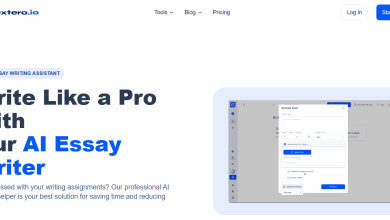DUBLIN–(BUSINESS WIRE)–The “Trade Surveillance System Market by Application (Surveillance & Analytics, Risk & Compliance, Reports & Monitoring, Case Management) and End User (Financial Institutions, Capital Market, Digital Asset Exchange) – Global Forecast to 2030” report has been added to ResearchAndMarkets.com’s offering.
The global trade surveillance system market is expected to grow from USD 3.00 billion in 2025 to USD 5.90 billion by 2030 at a compounded annual growth rate (CAGR) of 14.5%
This research provides the most accurate revenue estimates for the entire trade surveillance industry and its subsegments, benefiting established leaders and new entrants. Stakeholders will gain valuable insights into the competitive landscape, enabling them to position their companies better and develop effective go-to-market strategies. The report outlines key market drivers, restraints, opportunities, and challenges, helping industry players understand the current state of the market.
Increased regulatory focus and supportive policies are driving the adoption of trade surveillance systems globally. Regulators enforce stricter compliance standards to prevent market abuse, insider trading, and fraud, prompting financial institutions to invest in AI-driven monitoring, real-time analytics, and cloud-enabled platforms. These investments enhance transparency, operational efficiency, and risk management.
However, many firms still rely on legacy trading and monitoring systems, which pose significant challenges. Upgrading to modern trade surveillance platforms requires substantial time, technical expertise, and financial resources. As a result, the complexity and cost of integration act as key restraints for the trade surveillance system market.
Europe will account for the largest market share, while Asia Pacific will emerge as the fastest-growing market during the forecast period
Europe is among the largest markets for trade surveillance systems, driven by stringent regulatory frameworks such as MiFID II, the Markets in Financial Instruments Directive, and ongoing enforcement by national financial authorities. Financial institutions in the United Kingdom, Germany, and France are investing heavily in AI-powered monitoring, real-time analytics, and integrated communication surveillance to ensure compliance and prevent market abuse. Well-established exchanges, advanced technological infrastructure, and strong regulatory oversight contribute to the region’s leading position.
In contrast, the Asia Pacific region is the fastest-growing trade surveillance market, with a high CAGR driven by the rapid adoption of electronic trading, derivatives, and digital assets. Singapore, Hong Kong, Australia, and Japan prioritize modern surveillance technologies, including cloud-based platforms, AI-driven anomaly detection, and big data analytics, to address increasing market complexity and regulatory requirements. Expanding fintech ecosystems, rising investor awareness, and government initiatives to enhance market integrity fuel strong demand, making the Asia Pacific a high-potential growth region for trade surveillance solutions.
Based on the deployment mode, the on-premises segment is expected to hold the largest market during forecast period
On-premises trade surveillance gives organizations direct ownership and control over their monitoring systems, offering a high degree of customization to meet specific operational, security, and compliance needs. By hosting the infrastructure internally, firms can design and configure the platform to align precisely with existing workflows, data management policies, and integration requirements. This level of control allows fine-tuning of surveillance rules, alert thresholds, and investigative processes to reflect unique trading patterns and regulatory obligations across jurisdictions.
Sensitive trading data is retained within the organization’s network, minimizing exposure to third-party storage environments and enabling the application of proprietary cybersecurity measures. This proves beneficial for institutions handling highly confidential or market-sensitive information, where data sovereignty and privacy regulations demand strict oversight. On-premises deployment also allows organizations to dictate their own system maintenance, update schedules, and disaster recovery protocols, ensuring operational continuity despite external disruptions.
Performance optimization is another key benefit, as firms can allocate dedicated computing resources to process high volumes of trade data without dependency on external bandwidth or shared infrastructure. Integration with in-house legacy systems is often more seamless, reducing the complexity and risk associated with third-party connectivity. Vendors delivering on-premises solutions emphasize providing robust installation support, flexible configuration options, and ongoing technical assistance to ensure sustained performance and compliance alignment. In essence, on-premises trade surveillance combines operational independence with tailored capability, empowering firms to safeguard compliance while maintaining complete control over their technology environment.
Based on the offering, the services segment is expected to grow at the highest CAGR during the forecast period
Services are vital in ensuring trade surveillance solutions operate at peak efficiency, deliver consistent compliance outcomes, and adapt to evolving market and regulatory conditions. A well-structured services portfolio equips institutions with the guidance, technical expertise, and ongoing support necessary to extract maximum value from their surveillance investments.
Specialized training and consulting services help compliance teams understand detection methodologies, optimize alert configurations, and interpret system outputs effectively. Efficient deployment and integration services ensure seamless connectivity between the surveillance platform and existing infrastructure, including order management systems, data feeds, and reporting tools. Ongoing support and maintenance services safeguard system performance and reliability. Regular updates address evolving compliance requirements, enhance detection capabilities, and incorporate technological advancements such as machine learning improvements. Responsive technical support ensures that issues are resolved quickly, preventing gaps in monitoring coverage.
Key Attributes:
| Report Attribute | Details |
| No. of Pages | 262 |
| Forecast Period | 2025 – 2030 |
| Estimated Market Value in 2025 | 3 billion |
| Forecasted Market Value by 2030 | 5.9 billion |
| Compound Annual Growth Rate | 14.5% |
| Regions Covered | Global |
Market Overview and Industry Trends
Market Dynamics
Drivers
- Stringent Regulatory Compliance Requirements
- Rising Market Abuse and Insider Trading Cases
- Increasing Trading Volumes Across Emerging Nations
- Increasing Demand for 360-Degree Trade Surveillance
Restraints
- Technology Failures Creating Surveillance Blind Spots
Opportunities
- Surveillance for Crypto and Digital Assets
- Integration of AI and Machine Learning to Reduce False Positive Rates
- Growing Inclination to Adopt Cloud-Based Deployments in Trade Surveillance
- Demand for Low-Latency Reporting and Time-Series Databases
Challenges
- Integration Across Disparate Systems
- Monitoring and Mitigating Risks from Colocation-Driven Trade Manipulation
Case Study Analysis
- Bringing Risk Insights, Monitoring Tools, and Growth to Kkps With Nasdaq
- Australian Bank Tackles Financial Fraud With An Integrated Surveillance Solution
- Dma Enhances Compliance Control With Steeleye
- Upgrading UK Bank Trade Surveillance
- Falconx Strengthens Institutional Crypto Trading With Solidus Labs Partnership
Technology Analysis
Key Technologies
- AI
- Machine Learning
- Real-Time Processing
Complementary Technologies
- Enterprise Integration
- Compliance Management
- Data Analytics
Adjacent Technologies
- Blockchain
- Cloud Infrastructure
- Natural Language Processing
Regulatory Implications and Industry Standards
- General Data Protection Regulation
- Sec Rule 17A-4
- Iso/Iec 27001
- System and Organization Controls 2 Type II
- Financial Industry Regulatory Authority
- Freedom of Information Act
- Health Insurance Portability and Accountability Act
Impact of AI/Gen AI on Trade Surveillance System Market
Case Studies
- Six Combats Market Abuse With AI-Based Technology
Vendor Initiatives
- Revolutionizing Trade Surveillance With AI-Powered Precision and Contextual Intelligence
- Driving Next-Gen Trade Surveillance With AI-Powered Precision and Proactive Risk Management
Trade Surveillance System Market, by Asset Class
- Equity Surveillance
- Fixed Income Monitoring
- Derivatives Tracking
- Commodities
- Foreign Exchange
-
Digital Assets
Companies Featured
- Nice
- Nasdaq
- Fis
- Ipc Systems
- Aca Group
- Crisil
- Nexi S.P.A
- Acuity Knowledge Partners
- Lseg
- Tradinghub
- Trading Technologies
- Ionixx Technologies
- Kx
- B-Next
- Mycomplianceoffice
- Onemarketdata
- Eventus
- Broadpeak Partners
- Steeleye
- Solidus Labs
- S3
- Trapets
- Trillium Surveyor
- Scila
- Aquis Exchange
For more information about this report visit https://www.researchandmarkets.com/r/sggnph
About ResearchAndMarkets.com
ResearchAndMarkets.com is the world’s leading source for international market research reports and market data. We provide you with the latest data on international and regional markets, key industries, the top companies, new products and the latest trends.
Contacts
ResearchAndMarkets.com
Laura Wood, Senior Press Manager
[email protected]
For E.S.T Office Hours Call 1-917-300-0470
For U.S./ CAN Toll Free Call 1-800-526-8630
For GMT Office Hours Call +353-1-416-8900





